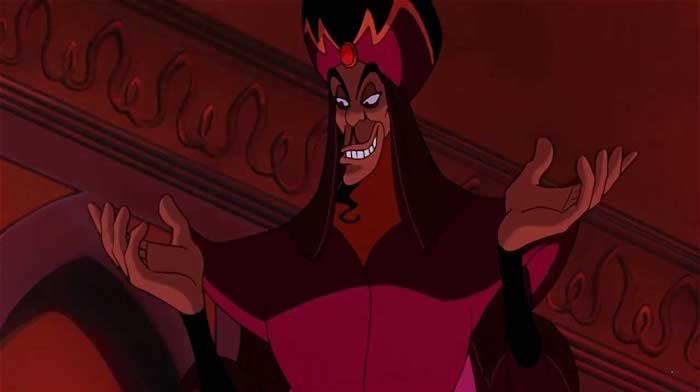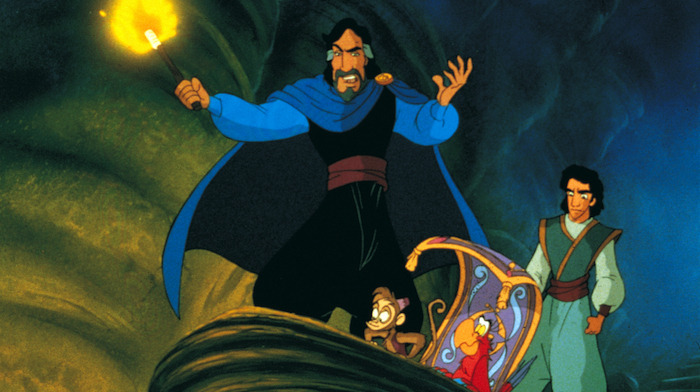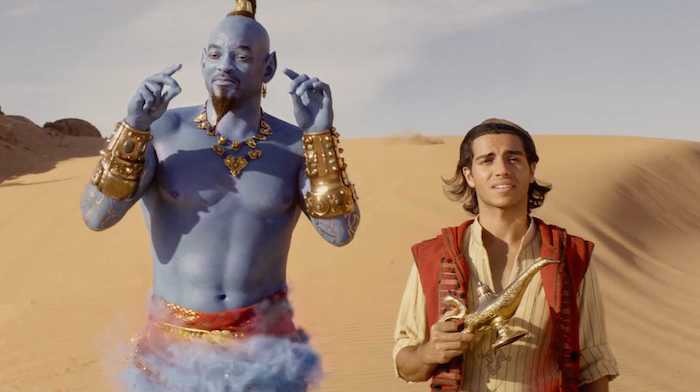'Aladdin And The King Of Thieves' Is Now 25, So Let's Revisit Disney's Peculiar Direct-To-Video Era
Anniversaries for Disney movies tend to elicit a lot of think-piece excitement among pop culture writers. The House of Mouse has helped to define animation arguably more than any other company of the past century, and the Walt Disney Company's much-vaunted output has inspired generations of film fans. One Disney film is turning 25 this year, but you probably won't see the company celebrating it on social media or a slew of articles to commemorate the occasion.
In 1996, Disney released Aladdin and the King of Thieves, a second sequel to 1992's Aladdin that the studio went all-out in promoting, with a $70 million marketing campaign that included McDonald's tie-ins and endless television ads. The movie heralded the glorious return of Robin Williams as the Genie following an acrimonious fallout with the company. It received a good review in The New York Times, took home an Annie Award, and made around $130 million for Disney. It's also not officially considered a Disney animated feature. Rather, it's one of the many direct-to-video efforts that dominated the home release market in the '90s and signaled a curious new era for The Walt Disney Company.
The VHS Era
Much has already been said about Disney's creative renaissance in the '90s, a period of cultural and commercial power that saw the company reclaim its crown as the top name in American animated film after a wilderness period that saw them close to bankruptcy. For a solid 10 years, Disney released a lush ensemble of films that won awards, earned billions of dollars, and made the studio unbeatable in the oversaturated market of children's entertainment. Yet, even with Disney hogging up such a massive degree of the ongoing pop culture discourse, a major part of its renaissance-era legacy has been widely ignored by fans and the company alike. For every masterpiece, there were three or four direct-to-video cartoons that now languish in the attics of our parents' homes or on the shelves of charity shops across the world.
Direct-to-video (DTV) sequels had become a surprising financial boon for many studios as home video became a regular feature in people's homes. Many films bypassed theatrical releases in favor of DTV because the studios felt they simply weren't strong enough for the traditional model. A film that may have flopped in cinemas, due to its quality or niche appeal or controversial nature, could reap back its costs via video sales. DTV was a popular distribution model for schlocky action films, violent horror titles, and good old-fashioned pornography. It wasn't necessarily seen as a family-focused market in the '80s.
Disney's CEO Michael Eisner was initially hesitant to enter this market. He and then-Disney Feature Animation president Peter Schneider worried that such releases would cheapen the brand (this was also a reason they almost never made sequels, with The Rescuers Down Under being a rare exception up unto this point). This was also why they had initially shied away from allowing their classic features to receive home releases. Such movies typically received anniversary runs in theaters and were often highly lucrative because of their seeming exclusivity. This led to the Disney Vault, a release model that offered limited home releases of these films before they were "put back" on the shelf. Essentially, if you wanted to own, say, Peter Pan on VHS, you had to buy it during this brief window of opportunity. It certainly allowed Disney to control the market, although the false rarity of their films during this era has its fair share of critics. That's partly what makes the DTV Disney era so fascinating: how did a company that prided itself on not over-saturating the market with inferior content decide to do just that?
Sequels to Everything and Anything
During this era, Disney had founded a television animation studio dedicated to creating syndication-friendly titles like Adventures of the Gummi Bears, DuckTales, and TaleSpin. Following the smash success of Aladdin, Walt Disney Television Animation went to work on creating a TV series based on the film (they had already done this with The Little Mermaid). As was common with half-hour animated television series at the time, Disney planned to begin the series with an hour-long television special, but animator Tad Stones told executives that this project was good enough for a home video release. After winning over then-Disney chairman Jeffrey Katzenberg, The Return of Jafar was slated for a DTV premiere. Critics were mixed to negative on the film, noting how much this sequel felt like a step down from the first one, with Dan Castellaneta's Robin Williams impersonation standing in for the Genie leaving some viewers disappointed. It certainly wasn't at the level of Aladdin, thanks to its much smaller budget of around $3 to $3.5 million.
Yet it didn't matter. Aladdin was a hit and audiences were happy to get more of what they loved. The Return of Jafar sold 15 million VHS tapes, grossing more than $300 million. It's still one of the best-selling films ever released on home video.
DTV soon became a major priority for the company, always second to the classic theatrical animated releases but one important enough to warrant an increase in overseas Disney studios hiring. The movies came thick and fast, and almost all of them were sequels, prequels, or spin-offs of some kind. Beauty and the Beast received a Christmas movie featuring an evil organ voiced by Tim Curry. Pocahontas journeyed to England, as she had done in real life, in a highly romanticized sequel, Journey to a New World. Ariel's daughter returned to the sea for a Little Mermaid follow-up. Even Quasimodo from The Hunchback of Notre Dame, one of Disney's most notoriously adult films, got a girlfriend in his DTV sequel.
It's hard to avoid the reality of just how bad most of these films were. Many of them undid the satisfying conclusions of their original stories or had near-identical plots, typically involving a newly introduced love interest. The animation often wildly varied in quality. Other films were clearly just a handful of TV episode parts hastily cut together to form a vaguely cohesive narrative, as was the case for the abandoned spin-off series turned movie sequel Atlantis: Milo's Return. For every sequel, there would be a midquel that filled in details nobody asked for, or ones that utterly undid the emotional resonance of the original story, such as the deceptively named Bambi II, which followed the character's relationship with his father.
These DTV releases were always solid business. If you were a Disney-loving kid in the '90s, chances are high that you had at least one of these movies at home. But the more devout Disney fans seldom held them in high regard. A common complaint was that these films went against Uncle Walt's ethos of perfection and that they tarnished the original titles. Animation and family-focused entertainment was often seen as frivolous and an acceptable genre with which to cut costs and corners, something Disney always opposed. The DTV movies felt too much like those cheaply made knockoffs of real Disney movies that polluted many a video store. That inimitable Disney magic simply wasn't there. Really, it felt like anyone could have made these films.
The Exception That Proves the Rule
This cyclone of conflict and compromise is partly what makes Aladdin and the King of Thieves so fascinating. It's clearly a rush job of some kind, a studio demand designed for profit and not much else. Sure, Robin Williams is back as the Genie (something the marketing made impossible to overlook), but those problems remain: the animation isn't as good, the songs aren't as catchy, and the story feels unnecessary.
And yet the movie is surprisingly good. While the faults are evident, Aladdin and the King of Thieves stands out for its consistent joke rate, a genuinely interesting emotional arc involving Aladdin's father (as well as Iago, who curiously ends up being one of the more complex characters across this trilogy), and it works as its own narrative. While the scope is severely limited by that rock-bottom budget, there is an undeniable thrill in seeing more of this world and exploring more of the lore of the Arabian Nights that formed the backbone for the original film. Crucially, everything that it adds to the story doesn't detract from what made it so good in the first place. If you really wanted to, you could watch King of Thieves and enjoy it without having ever seen Aladdin.
But that film is a rare exception to a rule that quickly became tedious for Disney fans. As the end of the main animation renaissance made way for an era of confused and commercially disappointing fare, the proliferation of DTV titles, diminishing in quality with every release, only made the company seem as though they were in the direst of situations. By the mid-2000s, with DTV titles like Brother Bear 2 and The Fox and the Hound 2 going on sale to borderline furious reviews, it seemed as though this trend had long outstayed its welcome.
In 2006, after Disney purchased Pixar, John Lasseter was hired to be Disney Feature Animation's chief creative officer. Lasseter was clear from the get-go that he disliked Disney's DTV pipeline and felt that the movies undercut the value of the classic canon. Eventually, he called for the cancelation of all future films in production or development at Disneytoon Studios, which at the time included sequels to Dumbo, The Aristocats, and the recent release Meet the Robinsons. Disney didn't exactly stop making direct-to-home-release titles, with the Tinkerbell franchise now making headway, but it was clear that this era of DTV Disney was coming to a close.
A Whole New World
By this point in time, sequels were now commonplace within the company's main roster, and many of them were critically adored as much as the original stories, such as the Toy Story franchise. The 2010s also heralded the new era of Disney, one of undisputed multi-platform domination in large part thanks to the growth of the expanded franchise format. With various acquired IPs under their belt, Disney moved into a new era with their classic animations. Rather than cheaply sequelize them, the studio now lavishly remakes them in live action, with $200 million-plus budgets and major stars in the leading roles. 2019's remake of The Lion King is already the seventh highest-grossing film of all time.
These live-action remakes inspire the same kinds of debates that the DTV films did: they cheapen the brand, they're superfluous, they don't capture the magic of the originals. The key difference here is that these aren't cheaply made cash-grabs: they're now the default mode of Disney. Straight-to-video sequels to Aladdin kept that property alive for '90s kids, and now zoomers have Guy Ritchie's remake. The principle is the same, even if the stakes have changed. This roster of remakes reinforces Disney's branding for new generations and ensures that the company will always find new ways to milk a few extra dollars from the eternally enduring force of nostalgia.
So don't be surprised if we suddenly hear news of a live-action remake of The Return of Jafar in the near future. If it happens, it will play in theaters.



